Sunlight dappled the woodland ahead. A kestrel flew by in a flash, its chestnut-coloured back caught occasionally in the natural spotlights. In the constantly moving light and shade, it was impossible to spot the chiffchaffs singing loudly from the canopy, but their repeated refrain was comforting nonetheless. However, it wasn’t long before an entirely different tune drowned out their song of spring. As we reached the trees closest to the shore, a distant clamour became a cacophony of contact caws. The tallest and strongest trees contained nests in their upper branches. Any that didn’t have nests were in the process of being stripped of long twigs. The breeding season for the rooks of Cambo Sands was noisily underway.
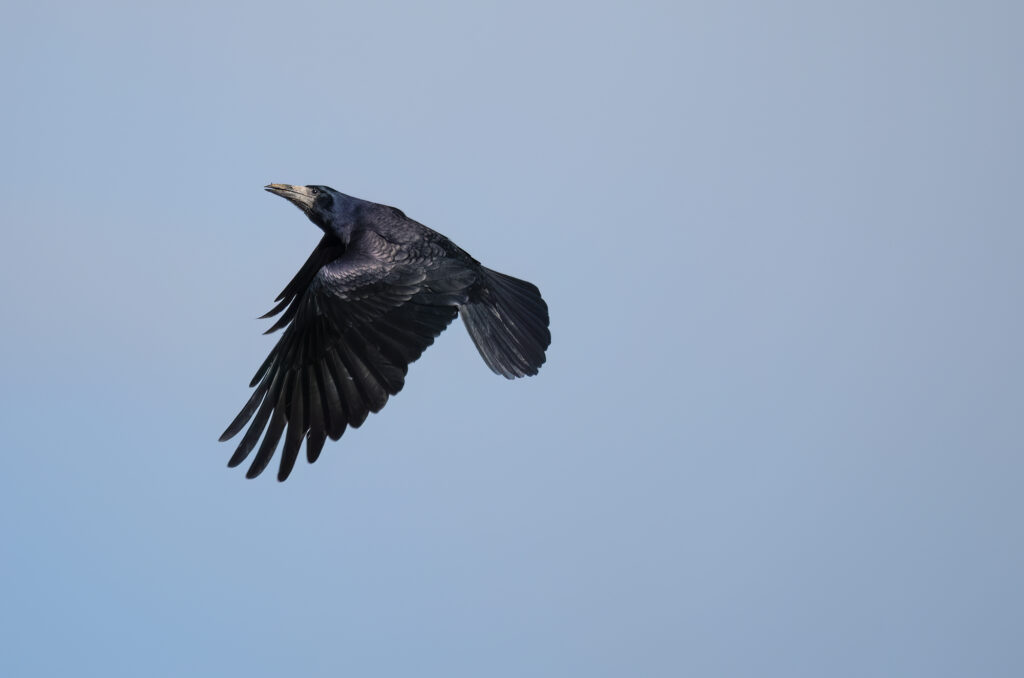
The rook is probably my favourite corvid species if you can have such a thing. They may not have the brutal beauty of ravens or the velociraptor-esque sharpness of jackdaws, nor the confidence of rattling magpies, and they aren’t as colourful as jays. But something about a rook results in a wave of pleasure whenever I see one rooting around on a roadside verge or stabbing its strange beak into soft soil.
I guess they aren’t conventionally good-looking birds. There is the strangely shaped bill leading to the featherless part of the face. They look like someone was in the middle of sculpting and smoothing that face when they flew away, or like something from Jim Henson’s Creature Shop that belongs back in the Labyrinth. But I find all that oddly attractive, and if you look closely at that plumage in the right light, all you will see are stunning shades of midnight blue.
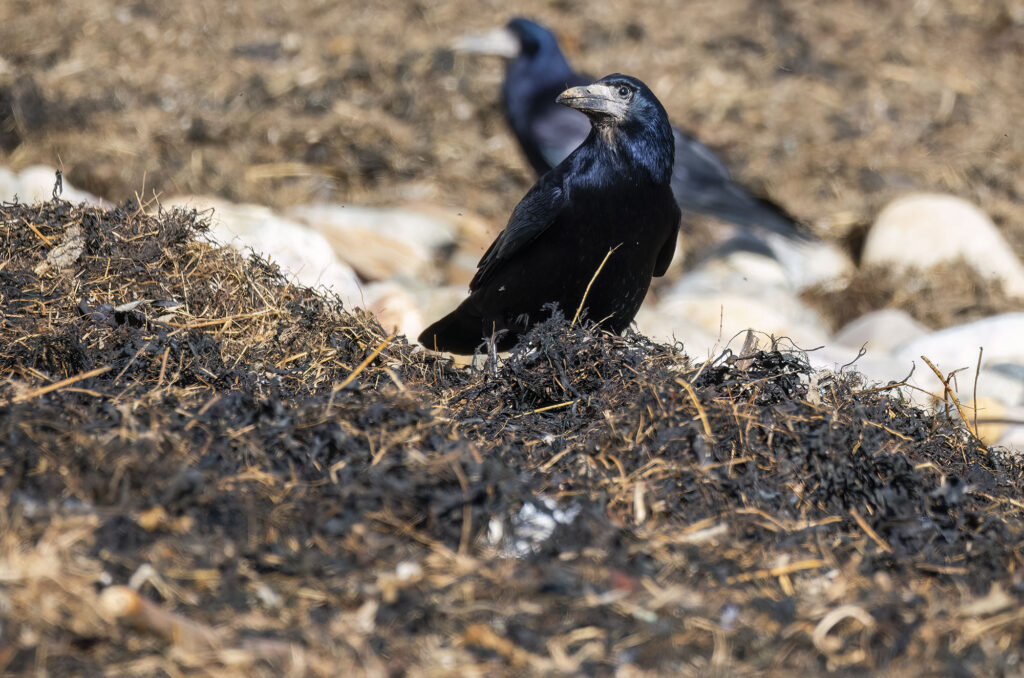
That said, they can easily be confused with carrion crows – particularly the juveniles, as they have more feathery faces than their adult counterparts. So, when trying to tell the difference between these corvids, I find it easiest to look at their general appearance. Carrion crows appear neater – like they have somewhere to be that has a smart-casual dress code. Rooks appear shaggy and unkempt in comparison – like they are ready to have a Saturday evening with their feet up on the sofa watching Gladiators and eating takeaway.
And while there is an old saying to help you tell the difference, I have not found it particularly useful in some areas. The idea that “a crow in a crowd is a rook and a rook on its own is a crow” can often be discounted when walking through any urban or suburban green space where the feeding is good. In these spots, I have regularly witnessed large numbers of carrion crows foraging alongside one another. The old sayings obviously haven’t kept up with changes to our environment and the adaptability and resilience of corvid species.
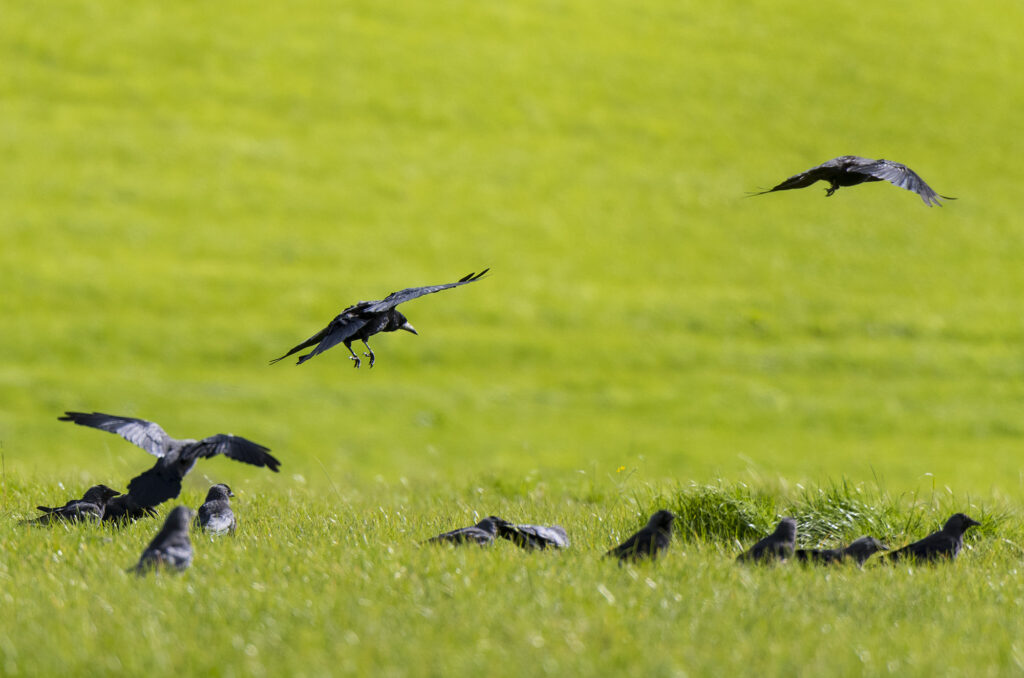
However, it is undeniable that rooks are the most social corvid species. Whereas carrion crows will tolerate each other and work together in certain environments and situations, sociability runs through the entire thread of rook life. And this doesn’t just extend to their own kind and their tight-knit rookeries. Rooks feed and roost with jackdaws, particularly in winter when they are joined by hundreds, and sometimes thousands, of them as they gather during the late afternoon. They will then drop into the roost site as dusk falls, with individual birds calling constantly to each other and shuffling around in the trees before all falling still and silent for the night. Unfortunately, this is a sight I am yet to behold in all its glory. If you want to hear in detail about the wonders and complexities of rookeries, I recommend reading Mark Cocker’s fascinating book Crow Country.
When photographing rooks, I am especially keen to capture their breeding behaviour. Rooks are renowned for their exceptional nest-building prowess. During the breeding season, which typically commences in early spring, rookeries come alive with the bustling activity of pairs meticulously constructing their nests. These structures – crafted from various materials, including twigs, branches, mud, and grass – are architectural marvels, often reaching impressive sizes. While traditional nesting sites are in tall trees within rural settings, rooks have demonstrated remarkable adaptability by colonising alternative nesting sites such as cliffs, buildings, and even urban parks. This ensures their survival in ever-changing landscapes.
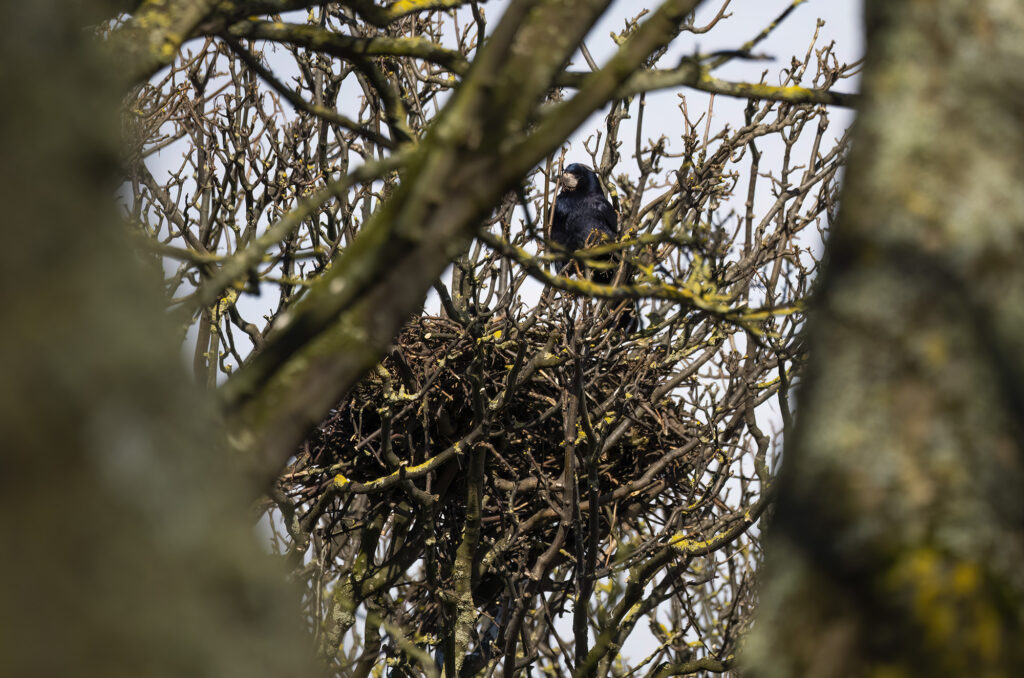
The rook’s intelligence is also worth capturing. They have demonstrated the ability to problem solve and use tools. They cache food – creating stores they can fall back on if they struggle to find something to eat. They hunt along tide lines to find molluscs and shellfish and drop them onto rocks to crack the shells open. They even monitor human activity to capitalise on our wasteful nature. I once saw a rook that had taken sentry duty outside a branch of McDonald’s. Every time the front doors slid shut, and the humans were safely inside, it ran over to check what crumbs had been dropped outside. Most importantly, they learn these techniques from each other and share resources – the success of the rook community is key.
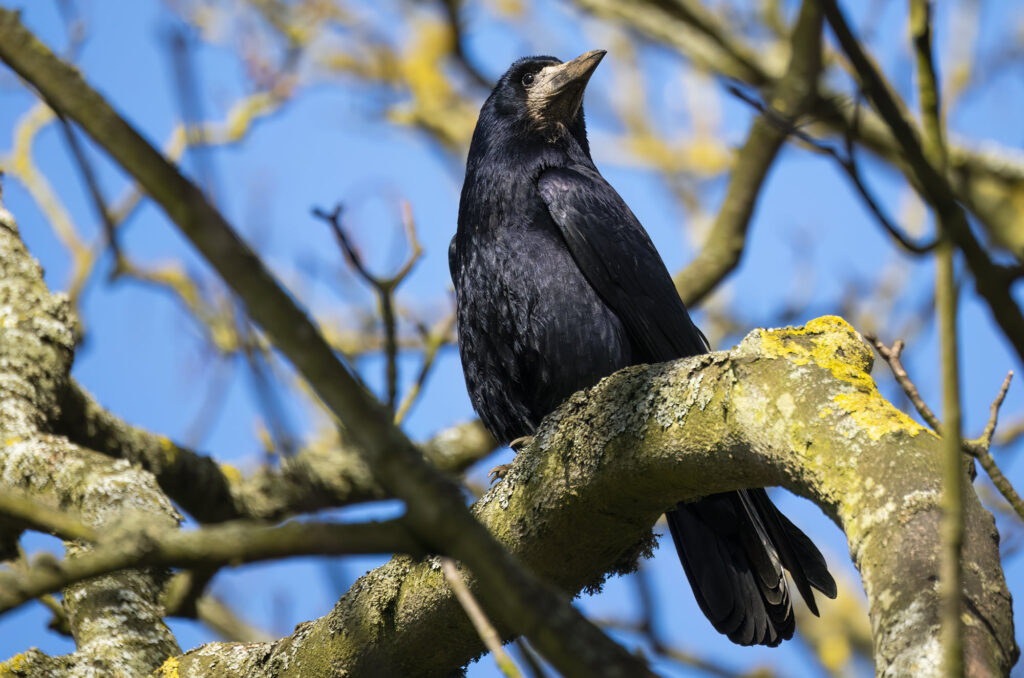
Like other corvid species, the rook has a complicated relationship with humans. While their antics are beloved by some – including farmers who value their work in turning over the soil – others view them (and many other corvid species) as a pest at best and mindless livestock murderers at worst. I don’t want to dwell on the corvid debate here, as I am purposefully celebrating the rook and promoting it as a subject for wildlife photography. However, I think it is worth reflecting that we are both adaptable, resilient, intelligent and social species with a tendency to exploit the opportunities presented to us. As John Marzluff says in his book In the Company of Crows and Ravens (which I highly recommend):
To a surprising extent, to know the crow is to know ourselves.
So, getting to know the companionable rook a little better is time well spent.

